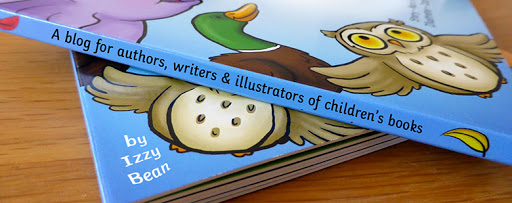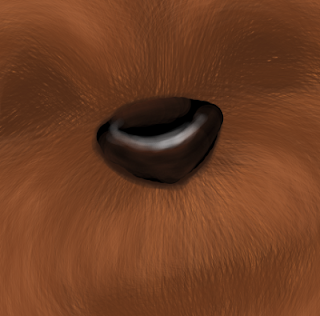How to paint a furry cartoon dog in Adobe Photoshop
It's been a while since I posted my last tutorial, but I finally got round to doing another!
This tutorial assumes you have some basic knowledge of Adobe Photoshop, if you don't, you can see my beginners tutorial here.
Things you'll need;
Computer / Laptop
Adobe Photoshop
Graphics tablet
To begin...
It helps to have a sketch of your idea already. For this tutorial I'll be using this guy;
The aim is to have him looking fun and cute in a cartoony way, whilst having the 'realistic' fur texture and painterly details. I don't want him to look like a real dog, but he shouldn't be a vector either!
To start, open up your Adobe Photoshop.
If you have a sketch already, open that file at a decent size to be working on. We will be zooming in and once you've created your art in Photoshop that's the size it will stay - so make it as big as you need it!
You want the sketch as a base layer underneath your art, so in the layers panel create a new layer.
As you can see in my sketch above, it helps to set the Opacity of the layer down to around 30 or 40% when working so you can see what you are doing. The Opacity is right above the layers in the layers panel.
Keep this sketch layer in the very top of your list in the layers panel. Click on the eye icon to the left of the layer, which makes it invisible. When you need a guide, just click on the eye icon again to see the guide over the top of your painting.
This is a great way of using a sketch or picture as a guide, without letting it influence your creative painting! You can flick it on or off as you need, or to check you haven't strayed too far from the original sketch.
Now lock the layer the sketch to prevent you accidentally painting onto it, by selecting the layer and clicking on the lock icon above it.
Saving...
I'm only going to mention this once, but I can't stress how important this really is! You must save your work as much as you can. Get into the habit of saving after every 5 minutes - don't think I'm exaggerating!
After you've worked on a project for 5 hours, when you lose everything because your computer 'crashed' you will not want to do the whole thing again.
Creating a base...
Now that you're set to draw, you need to create your base. I start by using the paintbrush tool on 100% Opacity, and block in the figure that I'm drawing. In this image I have already completed the legs and body, but the same technique applies to all parts.
What I find useful is if I separate the body parts into their own layers, this means I can move and edit individual bits without effecting the rest of the image - saving me time and effort.
So I've roughly blocked in my dog's head. The colour is not entirely important but try and pick one relatively close to what you want to end up with.
Using the 'magic wand' tool in the tools panel, select your colour block to get the moving line around it.
Work from the bottom, upwards...
It's the general rule in digital painting to work from the bottom upwards.
So think about how dark you want the darkest areas of your image to be, and select that colour in the tools panel.
Once you have the colour ready, you need to select your brush.
This may differ from the tutorial depending on what you are drawing, Photoshop has a great range of pre-loaded brushes, but you can also find hundreds of free brushes out there ready to add to your collection.
I'm trying to create a fur-like texture, so I select the 'round fan stiff thin bristles' brush. You may have to test and play around for a few before you find the one you like.
You can see all the brushes by clicking on the toolbar that runs across the top of the page.
The size, again, depends on what you're painting, so try a few and find one that suits.
The first stroke...
The 'undo' tool is your friend here. The only problem for me is that it doesn't go back far enough! I'll admit it, I make mistakes and undo things a lot as I go along. You can undo from the top menu using Edit... Undo or you can use a keyboard shortcut if you have one, mine is Command & Z
Be bold, and confident.
If you're shaky and unsure, your lines will be shaky and unsure. I tend to work better when my movements are faster and more like traditional painting. Work in the direction of the fur to give it a realistic and smooth feeling.
If you find your lines are too bold and strong, you can turn the Opacity and Flow down on the top bar.
I generally keep them around the same number but mess around and see what happens - you can get huge differences in your strokes by playing with these. I am continuously moving these sliders around while working to get the best look when painting.
As I said before - work your strokes in the direction of what you're drawing. This will really give your painting shape and form, rather than just a flat picture.
The first stroke...
Next I choose a slightly lighter colour - this is what I would consider my main colour.
I set the brush to a much lower Opacity and flow - around 50% and cover the darker strokes, and try and cover the 'base' colour which we blocked in with at the beginning.
It's around this time I deselect the magic wand I used earlier, so that my strokes can run anywhere on the page - previously they were contained to the shape of the dog's face.
It now takes much more care to not distort the shape, but you can let the fur effect take form instead of a cut off line around the image.
I know, it looks hideous, but we're not done yet! You can see the face taking shape even at this stage, which is why the strokes are so important.
Using the same technique I add some lighter colours to the fur - and darker fur where the eyes, nose and ears are.
If you're unsure what bits should be darker and lighter, or which way the strokes should flow - don't guess! Do a quick google search on your image and don't be scared to use references. It's not cheating, it's drawing from real life, sort of.
Adding details...
Any new 'part' you add should be kept on a separate layer. So we make a new layer for the nose...
And begin by blocking in the base, as we did with the head. Make sure you put the 'nose' layer above the 'head' otherwise you won't be able to see it!
Using the paintbrush at 100% Opacity I blocked in the nose shape. As before, I also selected this with the magic wand tool.
I want to add highlights to the nose - so I make the brush smaller, and turn down the Opacity and Flow to about 20% - it's so faint that I have to go over my strokes a few times to see any effect, but this gives me great control and looks better when finished.
I use the 'hard round' brush - because I don't want furry strokes in the nose!
As you can see I also added some ever so slight red - because dog's noses are not always fully black. It's this attention to detail that will really pay off in the end.
The nose right now sticks out like a sore thumb (huh?)
So I go back to the 'head' layer, and using the same brush fill in some shadow under the nose.
Much better. Next is the mouth! Remember to make a new layer...
Using the paintbrush with about 40% Opacity, I give myself a guide. Then I use this guide to build on, as before, with a base and working up. I made my paintbrush much smaller for these thin lines.
It doesn't look quite right... what have I missed?
Much better! Now that's done, all that's left is the eyes.
The eyes...
I love drawing eyes, they really bring the image to life and convey emotion.
To begin with, I use the paintbrush at 100% Opacity and create the eyeballs.
Zoom in close up, there's no point in working miles away and struggling to see - just make sure you zoom out every now and again to see what it looks like with the rest of the picture.
Just like I did with the nose, I'm giving the 'head' layer underneath some darker areas so the eyes sit better.
The eyes are still too perfectly round, they look too clean cut! Take the paintbrush at a small size and lower the Opacity a little, then go around the eyeballs and make them slightly less 'perfect.'
Add some grey shading, to make the eyes look like balls instead of flat circles...
And blend these in using a low Opacity white.
Add some black circles, using the paintbrush with 100% Opacity
Inside those pupils, add some colour for the Iris and black for the pupils. I wanted my dog to have intense, yellow eyes, but you can choose any colour you like of course.
Now using the same method as we did with the nose, blend the black, yellow and black into each other. I even added some darker yellow to give the eyes depth.
The last touch is a gleam of white highlight in each eye, and there you have it!
His ears to me still look a bit undefined, so I went back to the 'head' layer and re-worked them a bit.
Now I feel the dog should have a tongue! The beauty of working with layers is that I can go back to the mouth layer and add one.
Perfect!
And there you have it, I'd love to hear your feedback on this tutorial, and of course I'd love to see your work if you used the same technique!































































